10 top inventory reduction strategies to deal with excess and slow-moving stock
Slow-moving or excess stock can be a huge headache for sellers.
This often occurs at the beginning of the year after the crazy Christmas period or at the end of seasons when new products come into demand.
Not only does this mean valuable space in your warehouse is unavailable, but it can mess up your cash flow, and attempting to sell it can divert your attention away from other vital areas of the business.
Here are the best strategies for inventory reduction so you can spend less time worrying and more time focusing on what really matters.
In this blog post, we’ll give you some actionable strategies for reducing inventory and obsolete stock, helping keep your ecommerce business lean and profitable.
Let’s jump in.
Inventory management strategies for reducing excess inventory
1. Have a sale
Sales are a great way to reduce stock if done the right way.
If shoppers see you advertising a sale every week, they’re likely to lose their appeal and effectiveness.
That means choosing the right sale at the right time are important factors for maximizing your conversion rate.
There are several different types of sale you could push depending on the stock you’re trying to sell and the time of year.
Clearance sales
For example, if you store excess inventory that hasn’t sold in the last 6 months, a clearance sale could be a good option. Slash your prices and shout about your clearance sale on your website, social media channels and send out personalized emails.
Use the data you have about your customers to tailor your communication to those customers (e.g. previous orders, name, sizes, etc.).
It’s simple. If a customer receives an email alert of a clearance sale featuring a dress in their size, similar to what they’ve bought in the past, they are more likely to buy the product.
Flash sales
Flash sales are also great for creating a sense of urgency among your customers. Notify your shoppers of a limited-time offer and build anticipation with a series of drip emails and hype on social media.
Consider which products would be best to promote in this way.
Remember that you must align your flash sale with what your target audience wants. In other words, you need to put a discount on the products that are going to encourage the right people to click on your site.
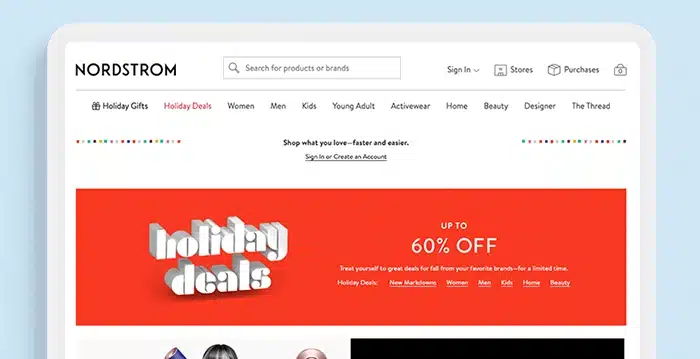
End-of-season sale
The end of a season is often a time when ecommerce businesses find themselves with excess stock that didn’t sell.
Before you focus all of your marketing on new season stock, make sure to have an end-of-season sale to minimize the amount of leftover inventory.
Another reason you might find yourself with excess stock is that you’ve just missed the mark on what time of year your product is seasonally in demand.
A tool for demand forecasting can help you make sure you know when a product is in demand so you don’t have to reduce as much inventory next time.
Also, sales on specific items can increase your conversions. Often, customers are put off by the chaos of a mass sale.
By focusing on one particular product or product range, your audience is funneled toward the discounts you want them to find.
For example, if customers are browsing your site and see you’re running a special offer on shoes, this could be more tempting than scrolling through pages of different sale items.
Removing too many options and barriers and instead putting a focus on your customers can be beneficial to your sales.
2. Bundle stock together
Creating product bundles is a great way to shift multiple products in one sale while still maintaining your profit margins.
By bundling your slow-moving products with your fast-moving products, you’ll be capitalizing on the popularity of other items.
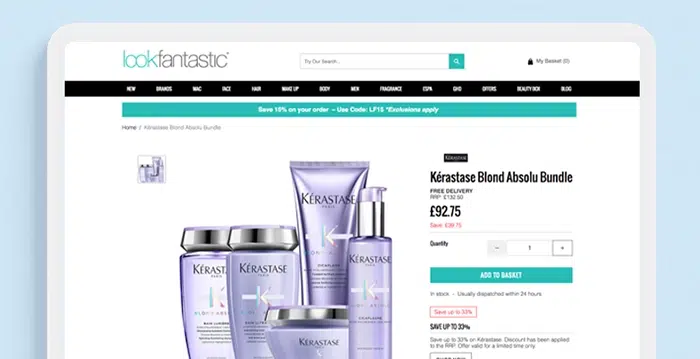
Online shoppers looking to purchase your top-selling items will view a product bundle as an attractive bargain and be more inclined to buy as they’d be getting additional products to what they initially set out to find.
This is also an opportunity to jump on key gift-giving dates like Mother’s Day and offer your bundle in the form of a beautiful gift set.
Consider pairing high-margin products with low-margin products so you can attach a more enticing price to your bundle or gift set too.
If you have a lot of the same product taking up space in your warehouse, consider offering these wholesale.
Lastly, always have the customer in mind.
If you’re struggling to sell a particular product, you could bundle complementary products and sell them as a more attractive package deal.
For example: let’s say a certain flavor of protein powder isn’t selling well, you could bundle this with a shaker bottle and vitamin supplement to make for a more enticing offer to your customers.
3. Cross-sell and upsell
Cross-selling is a great way to promote slow-moving products that are either similar to a more popular product or would complement it well.
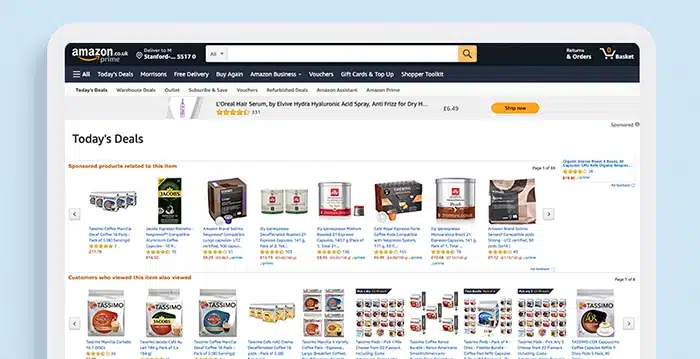
Used in the right way and shown at the right time, cross-selling can be really effective.
Let’s say you sell hair straighteners, but you struggle to sell your range of heat protector sprays and hair brushes.
This could be an ideal time to cross-sell these products either on the hair straighteners’ product page and/or at the checkout, particularly if these items are low-cost impulse buys.
Cross-selling on product pages can alert visitors to products they had not considered before or they did not know you even offered.
The checkout stage of the customer journey is a prime opportunity for cross-selling and inventory reduction.
Consider what add-on products could complement the order.
These need to be products that your customers don’t need to give much thought about buying — low risk and low cost.
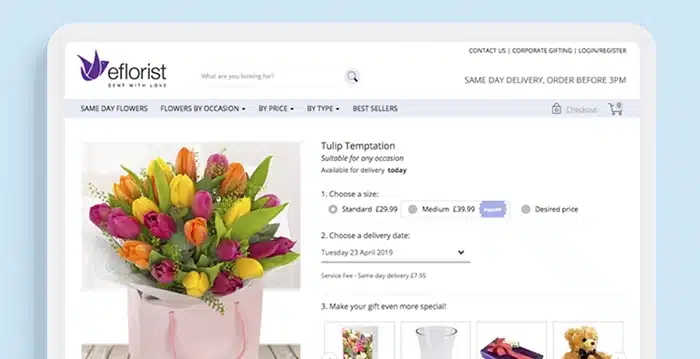
Up-selling could work if your slow-moving inventory consists of higher ticket items.
In order to upsell successfully, you need to help your customers visualize the value they will be getting by ordering a higher-priced product. To do this, you first need to understand what your customers value and then respond with the products that meet their needs, when the time is right.
Let’s say you sell jewelry. You have a customer who has bought a sterling silver bracelet and two charms already. They haven’t bought a charm from you in a while.
Now might be the right time to reach out and up-sell your luxury collection of charms. Or is a key retail date coming up, like wedding season?
Holidays and occasions are a great time to upsell as customers are looking to spend more on the perfect gift for someone special.
And personalization is really important here. You need to prove to your customer that you understand their individual needs before trying to upsell them.
Related Article: How to Increase the Average Order Value (AOV) of Your Ecommerce Store
4. Remarket and reposition
Simply stepping back and taking a fresh look at how you’re marketing your slow-moving products can sometimes make a big difference with inventory reduction. The most important element here is your product images.
When scrolling through a sea of products, it’s the product image that draws you in enough to click and find out more. It may be the case that your images just aren’t up to scratch. Give your products a fresh look with new photos.
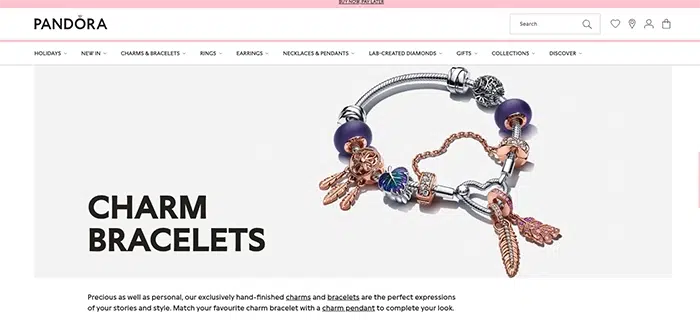
Test out different angles and consider the best way to display your products
For example, would a lifestyle shoot actually advertise your product better than a studio shot?
Make sure all images are high quality and that you have enough to show off the product from every angle.
Getting someone to click on your product has everything to do with emotion
They need to make an emotional connection with your product, and the cover image is the first impression they have…so make it count.
As well as the photos, take a fresh look at how you’re displaying your product. Is it search-friendly? Does your product title and description advertise your product as best it could?
Also, consider creating a new landing page dedicated to a certain product range that you could promote across paid ads and social media.
Visibility and accessibility improvements could help you convert slow-moving inventory
Even moving your products to different, better-suited categories on your site could help reach the right audience better.
Using the right keywords in your product titles and descriptions is important for two reasons:
- Evoking emotion and encouraging the visitor to want to purchase
- Improving your search engine optimization (SEO)
When was the last time you conducted some thorough keyword research?
This should be your first port of call before re-doing any copy.
It’s crucial you understand what your audience is searching for, what terms they respond to best, and what problems they are looking to solve with their purchase.
As well as getting the keywords right, copywriting, particularly when it comes to product descriptions, is the perfect opportunity to really relate to your audience. How do they talk? What do they read? Where do they hang out on social?
This is your chance to speak their language and identify with your target audience. And once they connect with you as a brand, they’re more likely to hit buy.
5. Use incentives to boost customer demand
Small incentives can be very powerful when it comes to the customer making their final decision whether to buy or not.
Just as presenting visitors with a discount code in exchange for their email address can really influence the sale, offering items as incentives can work just as well.
You need to pick the right product here. It needs to be something your audience actually wants.
Presenting a free gift in exchange for their email address is not only an incentive to purchase but an incentive to subscribe to your email list too, which is valuable in itself.
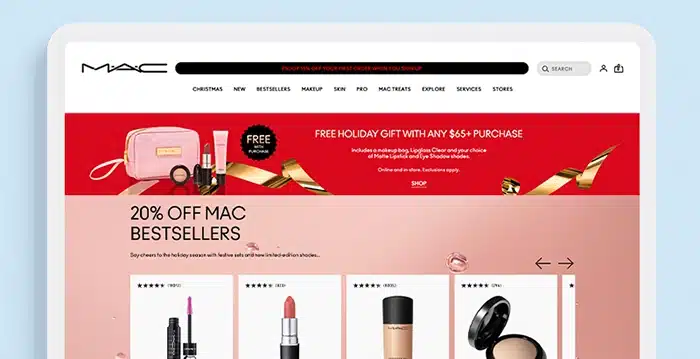
Build out your email list and then re-target these people with your free gift offers and other promotions to convert your excess, slow-moving stock into cash.
As well as collecting email addresses, you could incentivize shoppers to increase their order value by setting a spend threshold in order to receive a free gift.
For example: “Spend £75 or more and receive a free box of coffee capsules!”
Not only are you encouraging customers to spend more, but you’re getting rid of that old stock that’s just not moving.
6. Run a competition
A giveaway or a competition is a great way to create a new buzz around your excess stock and improve customer demand for it.
This inventory reduction strategy also serves as a fantastic brand awareness and lead generation opportunity.
You just need to use it to your advantage. Set the competition rules to benefit your sales funnel.
For example, you could gather more contacts with an email capture or build your social media following by having to follow you and retweet the competition post so they can be part of the competition.
Giveaways and competitions are only successful if you can get enough exposure. You need to have a clear strategy in place before you start running one.

Some key things to consider:
- What graphics or videos will you use to promote the competition?
- How will you let new and existing customers know about the competition?
- Make sure to use your email list, website popups, social media channels and connections with any relevant influencers to help extend your reach.
If the excess stock you have alone isn’t appealing enough to run a competition around, consider giving it away as a bundle along with more desirable products.
7. Work with influencers
Depending on your product and industry, working with the right influencers can really reignite interest in your slow-moving stock and help with inventory reduction.
Send excess stock to key people in your space who have the voice and the followers to reach your target market.
In return, ask for a review or a post on your product.
Endorsement and advertising from an influencer can be all it takes to send an influx of traffic to your product page and see a surge in sales. Influencers are an important part of your social commerce strategy.

They have the platform and the means to speak directly to your potential customers, so use them wisely. Building up a relationship with these influencers over time will really help in ensuring they sit up and take notice of your product when it arrives on their doorstep.
So, playing the long game here can make a huge difference and pay off down the line when you have a product that’s really struggling to sell.
Even if they decide not to spend time reviewing your product in full, simply seeing it in their hands could spark a new interest among your customers and put your product back on their radar.
8. Optimize your supply chain
Supply chain management is a great way to reduce inventory, as well as correct a warehouse with too much inventory.
To optimize your supply chain and effectively manage your inventory, it is crucial to maintain the right balance between inventory levels, demand forecasting, inventory planning, and inventory costs.
Inventory levels
Keeping optimal inventory levels is essential for ensuring that you can meet customer demand without incurring excess stock.
Regularly monitoring stock levels and making adjustments based on sales patterns can help minimize excess inventory and improve your supply chain efficiency.
Demand forecasting
Accurate demand forecasting is vital for determining the appropriate amount of stock to keep on hand.
By analyzing historical sales data, market trends, and seasonal fluctuations, you can better predict future customer demand and make informed inventory management decisions.
Inventory planning
Effective inventory planning enables you to maintain optimal stock levels and avoid stockouts or overstocking.
This involves setting minimum and maximum stock levels, reordering points, and safety stock levels.
Proper inventory planning helps you to respond quickly to fluctuations in customer demand and changes in your supply chain.
Inventory costs
Managing inventory costs is a crucial aspect of optimizing your supply chain. This includes storage costs, insurance, taxes, and costs associated with obsolete or slow-moving inventory.
By regularly reviewing and analyzing these costs, you can identify areas for improvement and implement strategies to minimize expenses and boost profitability.
And by focusing on these key aspects of supply chain optimization, you can ensure a more efficient inventory management process, reduce costs, and ultimately enhance your business’s overall performance.
9. Extend your returns and exchange policies
Particularly after the Christmas period, lots of online sellers find themselves with a ton of leftover stock.
A good inventory reduction strategy is to extend your returns policy at certain times of the year and on specific slow-moving products.
Christmas is such a chaotic period, so having the option to return unwanted gifts, unused decorations, and so on, could be extremely useful to shoppers who do not have time to worry about returning items straight after Christmas.
Having that cooling-off period could mean a lot to your customers and make the difference between them buying your product over a competitor.
Extending your exchange policy will also work in the same way, especially at Christmas when people are never sure what to get as gifts.
Like Christmas time, other gift-giving occasions or key retail dates, such as Father’s Day, festival season, or back-to-school season, could be great times to extend your returns and exchange policies to help meet the needs of your customers and give them the incentive to buy.
There could be many reasons why your excess stock isn’t shifting, but one of the reasons could be uncertainty that your product will meet their expectations.
By giving customers a longer decision-making period to return or exchange, you’re removing this barrier from their buyer’s journey.
Most of the time, people remember to return items within the first week of buying or getting them as a gift, so a short extension like this is unlikely to have much of an impact on the logistics and costs of your return and exchange process anyway.
10. Liquidate, donate or recycle
If all else fails and you simply can’t sell your excess stock, it’s time to get rid of it.
You may not be making much of a profit, but you’ll be saving yourself time, money, and valuable storage space in the process.
Going down the route of liquidation can take a lot of hassle out of your hands.
Do note though, these companies are likely to cherry-pick items at much lower price points, so you won’t see much profit if any at all, but you’ll be freeing up space and capital.
Another option is to donate excess inventory to charity
There are a few benefits of donating stock. Often you can receive tax deductions on your donated inventory.
Non-profit organizations, schools, churches and similar businesses may give you a shout-out to say thank you for your charitable donations, and you could even find yourself featured in relevant publications.
And of course, you’re doing a good thing for your community, supporting others and removing the burden of all your unwanted stock collecting dust. Why leave it in your warehouse when it could go to a new home where it will be put to good use?
As an additional option, if your stock has been damaged or gone out of date in the time it has taken to unsuccessfully sell it, then you can recycle it.
To help avoid getting to this stage next time, you can apply the First In First Out (FIFO) method. This is something you can set up within inventory management software.
By applying FIFO, you’ll be able to batch products by their expiry dates or the priority value you set.
This means that you’ll be able to dispatch your oldest stock first, reducing the risk of perishable goods becoming obsolete, such as food and drink, pharmaceuticals and cosmetics, and non-perishables becoming damaged or tarnished.
Learn more about the different inventory management techniques you can make use of.
On a final note
If you can’t find ways to sell your slow-moving stock, use it to your advantage by capturing contact details or as incentives to buy. If you’ve tried everything else, then it’s time to just get it out of your warehouse for good.
After all, warehousing costs are a type of inventory carrying cost that you should actively be seeking to reduce for greater profitability.
You should also keep on top of your inventory turnover rate. Your inventory turnover is the number of times your stock is sold and replaced in a given time period, as this can help to inform you of the inventory you may need to drop.
You can see the exact inventory turnover calculation here.
Ultimately, while it can be hard to part with your inventory, you need to know when’s best to cut your losses and move on, as excess inventory can really hold your business back.
To learn more about inventory management best practices, check out these posts next: